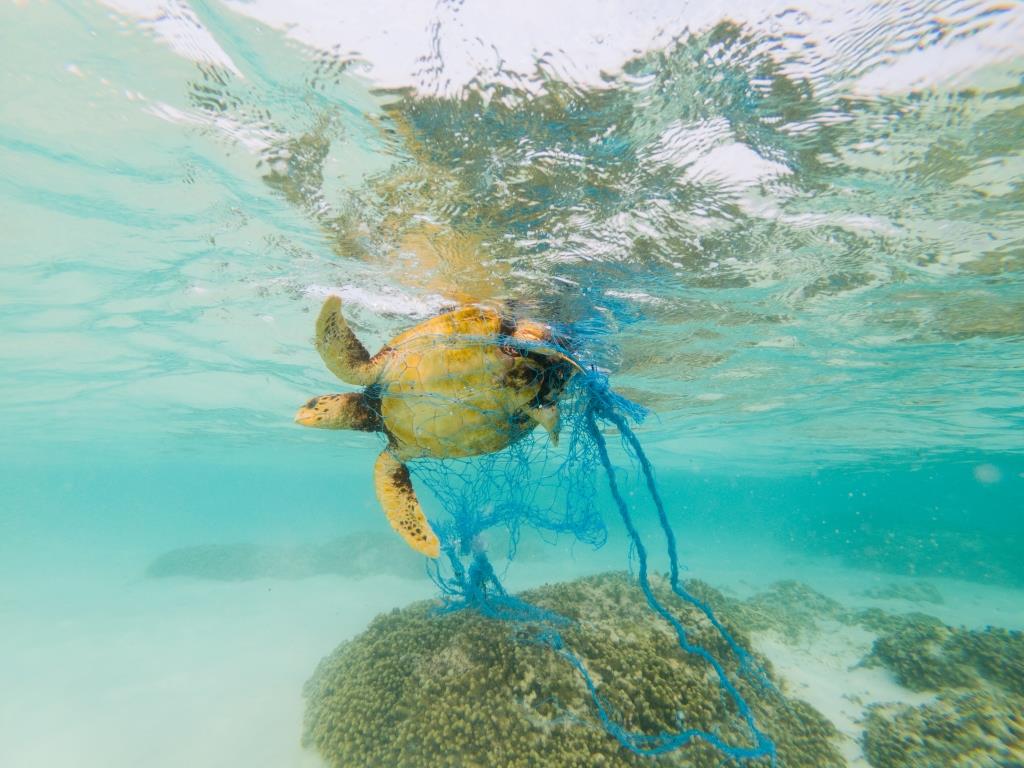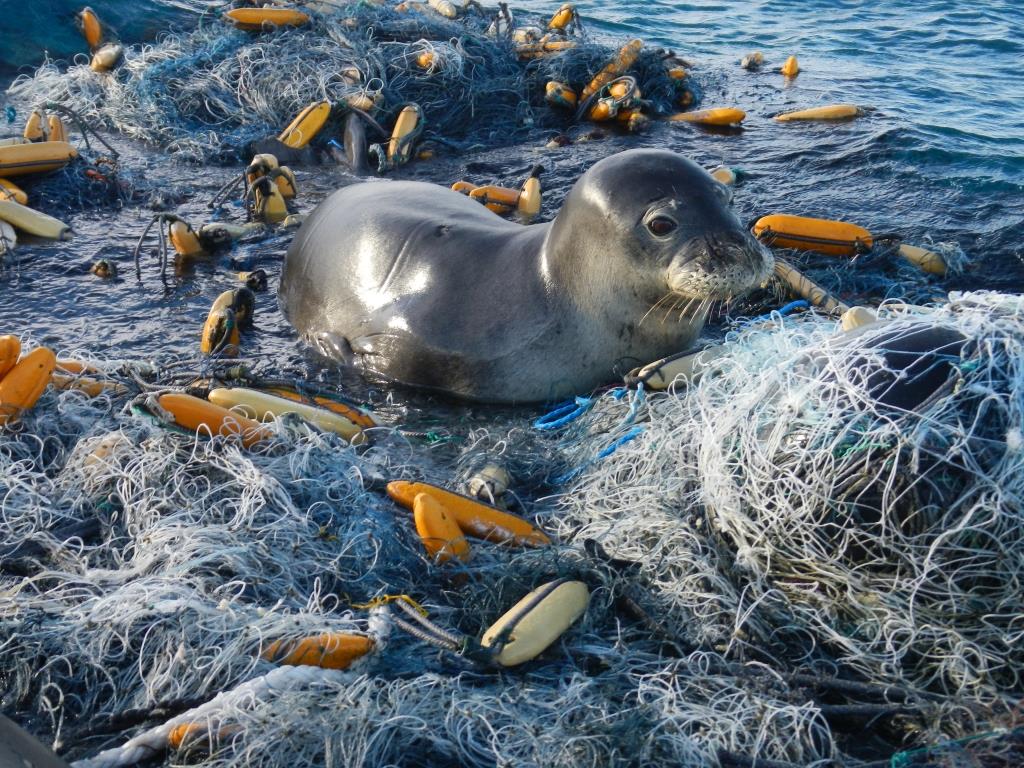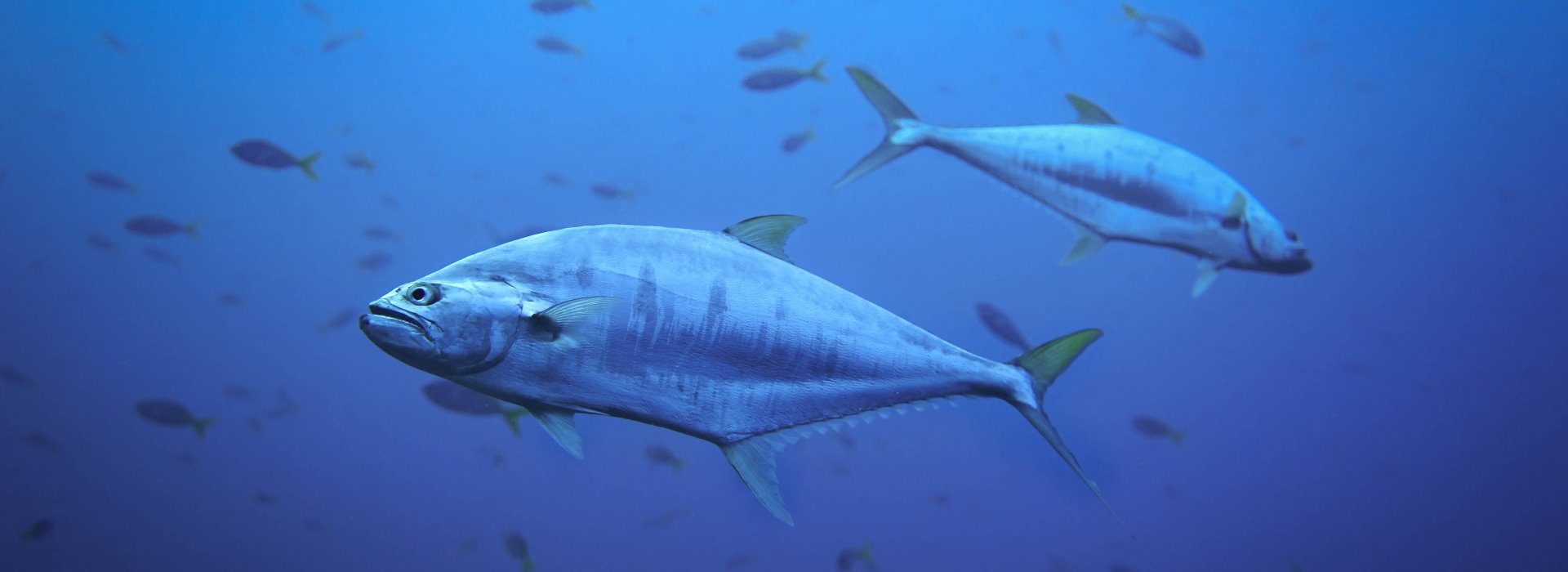

Industrial fishing threatens life in the oceans
Only 7% of world fish stocks are not overfished or fished below the overfishing threshold. The remaining fish stocks, i.e. over 90%, are fished to the threshold, are overfished or exhausted. Breeding (aquacultures) is booming, contributes to overfishing and destroys marine habitats. This emptying of the oceans has serious ecological consequences.
Dramatic decline in fish populations
Global fish consumption has increased by an average of 3.2% per year since 1961. This increase is twice as high as the annual increase in the global population. According to estimates, fishing fleets take around 80 million tons of officially declared fishes and other marine animals from the seas. The catching of a further 20 million tons of marine life is illegal and/or unreported and an additional 10 million tons of marine animals are thrown overboard as they are either too small or injured or do not fall under allowed fishing quota rules. This estimate does not include the bycatch of seabirds, marine mammals and reptiles. Of the landed fishes, between processing and consumption, over one-fifth end up as waste, as they are no longer considered suitable for sale and consumption.
Over the past six decades, populations of large pelagic predatory fishes such as tuna, swordfish, sharks and cod have declined rapidly, in parts by 90% or more. This depleting of big predatory fishes and the process of shifting to fishing for ever smaller (and deeper) fishes which, in turn, are food for big fishes, was described in the 1990s as “fishing down the food web”. The emptying of the oceans not only reduces biodiversity, but also endangers the vitality of the entire ecosystem.
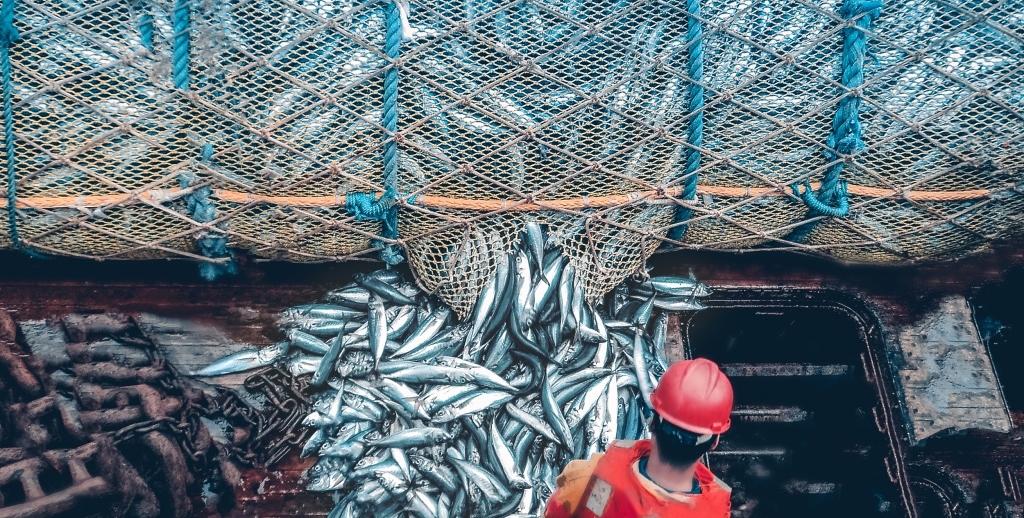
Bycatch and destruction of marine habitats
Industrial fishing methods are usually non-selective mass catching devices. This means that, apart from the target species pursued, they also lead to the pointless death of many other species of marine animals considered undesirable by fisheries. Certain bycatches are used, but innumerable ones that are dead or injured are thrown overboard. Estimates are that amounts to over 30 million tons of marine animals per year. Experts assume that more than 1 million seabirds (especially albatrosses), 8.5 million sea turtles, 650,000 marine mammals (e.g. dolphins or seals), over 200,000 sea snakes and 10 million sharks end up as bycatches.
The exploitation of various marine species has a massive impact on the ecology of the seas. Food webs, biological balances and structures are being changed and destroyed. Ground trawls, for example, are not only deadly traps for a multitude of marine animals that are not intentionally caught, but they also destroy the seabed and the organisms living there. These organisms have an important ecological status as detritus eaters, as they deplete dead organic material called sea snow sinking from the surface to the sea depths. The degradation of marine areas by fisheries can go so far that the resilience of the ecosystem to other influences such as pollution is reduced to the extent that so-called “dead zones” form, zones in which hardly any more oxygen and life occurs. These zones are increasing worldwide.
Modern fisheries also contribute significantly to marine plastic pollution. An estimated one-tenth of the garbage in the seas consists of fishing gear. Lost and/or improperly disposed fishing gear such as nets (so-called ghost nets), traps and lines are often made of plastics that are sturdy and last for centuries in the oceans, potentially becoming deadly traps for countless marine animals, as well as damaging soil structures such as reefs.
Fish farms
The immense demand for fishes and other marine animals, especially in industrialized countries, has led to a rapid development of breeding facilities, so-called aquacultures. Today, marine breeding plants produce over 50 million tons of fishes.
Breeding facilities are often designed so that they are anchored as a net enclosure in the sea itself or have a direct connection to the sea. As a result, the excretions of the bred marine animals (or fattened animals as in the case of certain tunas), pathogens and the partially added antibiotics get into the surrounding seawater. Certain aquacultures, such as shrimp farms in tropical areas, are built along coasts. As a result, large parts of the coastal habitats are destroyed, for example by the clearing of mangrove forests.
The most consumed fishes or marine species are carnivores (e.g. salmon, shrimp, tuna, octopus). The fish meal fed to them (but also to pigs and chickens) comes from wildlife stocks. Around one third of the world’s catches from open sea fishing is processed into fishmeal. A large part of aquaculture thus contributes to the overfishing of the oceans and does not reduce it, as assumed by many people.
Fishes also suffer
For some time now it has been scientifically proven that fishes as well as squid are intelligent and sentient creatures. They feel stress and pain to a high degree.
Nonetheless, they are exposed to high levels of suffering during both open sea fishing and breeding. In open sea fishing animals suffocate tortuously, are crushed or dragged on hooks for hours. Aquacultures are often overcrowded and the negative consequences for the animals are comparable to those for animals in land-based intensive farming systems. The farmed fishes (but also fattened fishes such as tuna) are under chronic stress leading also to an increased susceptibility to diseases. Many marine aquaculture habitats are neither appropriate for any species nor can the animals act out their biological needs.
Let’s give the seas a break
Sustainable fishing requires improved legal foundations and controls. In addition however, the cravings for marine fishes and other marine animals such as squid and crustaceans must be reduced in richer countries, because for a long time already more is consumed than what the seas can provide and stay healthy. The emptying of the oceans also deprives people in poorer countries of their food base and undoes coastal fishermen’s chances of securing a livelihood and income.
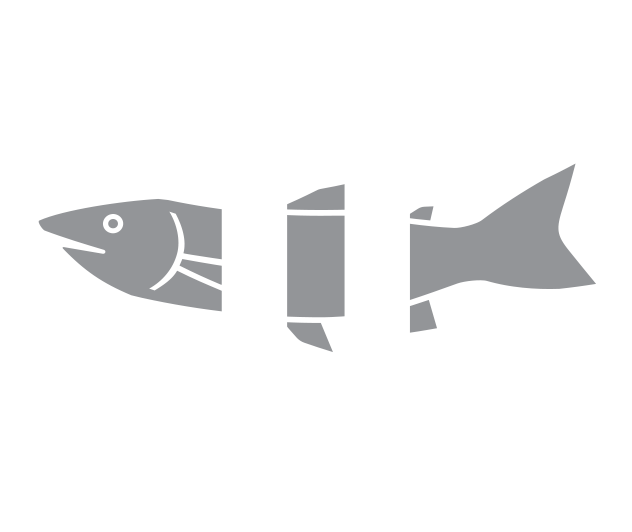
Will you give the seas a break?
You too can choose not to consume fishes and other seafood.
Will you give the seas a break?

You too can choose not to consume fishes and other seafood.
Worth knowing: fishing methods
Trawling
Trawling: Bag-shaped nets, the openings of which correspond to the size of up to 5 football fields, are dragged along the bottom of the sea (bottom trawls) or pulled through the water (midwater trawls). The process takes several hours, devouring entire schools of fishes. Targeted fishes types are mainly flatfish, shrimp, saithe, cod, mackerel and sardines. However, since this fishing method is extremely non-selective, the by-catch rates are high. In addition, bottom trawling means that the seabed is plowed and thus seriously damaged or even destroyed. Trawling is a common method of industrial fishing
Longline fishing
Longlines up to 100 kilometers in length with thousands of bait hooks along plastic side lines are laid out on the surface or at the bottom of the sea or pulled through the water. Targeted fishes include tuna and swordfish. Longlines cause several hundred thousand seabirds to die each year as they dive after and get stuck on the bait hooks while they are being laid out. Particularly affected are albatrosses, which are threatened with extinction. Also sharks and marine sea turtles are heavily threatened by longline fishing. This fishing method is also used in industrial deep-sea fishing.
Gillnet fishing
Nets of many hundreds of meters in length are anchored at the bottom or in the midwater zone for hours to days as static nets. Some also drift freely on the surface, although this has been prohibited in many places. Targeted fish species are tuna, snapper and barracudas. The animals’ heads get stuck in the meshes as they attempt to escape. As the nets are barely noticeable to marine animals, many end up as bycatch.
Seine net fishing
These up to 1,000 meters long and several meters high nets are deployed in a circular fashion in open water and after about two hours they are closed with a lacing line attached to the lower line leash, so that the fish shoals located therein are trapped. Target species include tuna, anchovies and mackerel. This method is more selective than others, yet bycatch can still not be prevented.
Worth knowing: fishing methods
schleppnetzfischerei
Sackförmige Netze, deren Öffnung der Grösse von bis zu 5 Fussballfeldern entspricht, werden über den Meeresboden geschleift (Grundschleppnetze) oder durch das Wasser gezogen (Mittelwasserschleppnetze). Der Vorgang dauert mehrere Stunden, wobei ganze Fischschulen verschlungen werden. Zielfischarten sind hauptsächlich Plattfische, Garnelen, Seelachs, Kabeljau, Makrelen und Sardinen. Da die Fangmethode jedoch äusserst unselektiv ist, sind die Beifangraten hoch. Zudem wird bei der Grundschleppnetzfischerei der Meeresboden umgepflügt und damit stark beschädigt oder sogar zerstört. Schleppnetzfischerei ist eine gängige Methode der Industriefischerei.
Langleinenfischerei
Bis zu 100 Kilometer lange Leinen mit Tausenden von Köderhaken an Seitenleinen aus Kunststoff werden an der Oberfläche oder am Meeresgrund ausgelegt beziehungsweise durchs Wasser gezogen. Zielfischarten sind unter anderem Thunfische und Schwertfische. Durch die Langleinen ertrinken jährlich mehrere Hunderttausend Seevögel, die den Ködern beim Auslegen nachtauchen und an den Haken hängenbleiben. Besonders betroffen sind Albatrosse, die vom Aussterben bedroht sind. Die Fangmethode wird insbesondere in der industriellen Hochseefischerei angewendet.
Kiemennetzfischerei
Viele Hundert Meter lange Netze werden am Grund oder im Mittelwasser für Stunden bis Tage als Stellnetze verankert. Teils treiben sie auch frei an der Oberfläche, obwohl dies vielerorts verboten wurde. Zielfischarten sind Thunfische, Schnapperfische und Barracudas. Die Tiere bleiben bei dem Versuch, durch die Maschen hindurchzuschwimmen, mit ihrem Kopf in diesen stecken. Da die Netze für Meerestiere kaum wahrnehmbar sind, verenden viele darin als Beifang.
Ringwadennetzfischerei
Die bis 1’000 Meter langen und mehrere Meter hohen Netze werden im Freiwasser kreisförmig ausgelegt und nach rund zwei Stunden mit der an der Unterleine befindlichen Schnürleine zugezogen, sodass die darin befindlichen Fischschwärme eingeschlossen sind. Zielfischarten sind Thunfische, Sardellen und Makrelen. Die Methode ist selektiver als andere, dennoch kann Beifang nicht ausgeschlossen werden.
